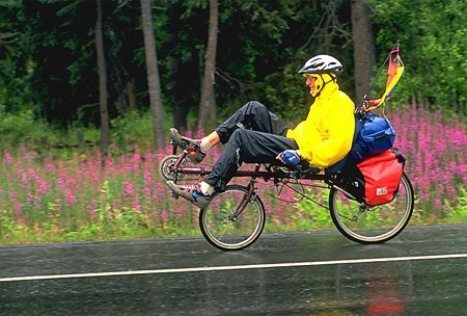The laws surrounding electric assist bikes are not well defined in the US, or anywhere else for that matter. As a general proposition, electric bikes remain bikes and they can be ridden without having insurance or a driver's license. Generally!
Problems occur in two areas:
- The law, such as it is, doesn't make much sense given the way electric motors actually work.
- Local laws trump state and federal law. Sometimes there are local laws. Sometimes not. And to make matters really interesting, sometimes local/state/federal laws are in conflict.
750 Watt Foolishness
The first problem here is that electric motors (actually motors of any sort) don't work in the way this foolishness assumes.Electric motors have a nominal rating of watts or horsepower. But that rating is nominal, not absolute. Generally, it's a number that says it's OK to put this much electrical energy into the motor on a continuous basis. It's also worth noting that motor manufacturers can, and often do, sell identical motors with different power ratings. The nominal rating doesn't say anything at all about how much energy you can actually put into the motor for a short period of time or for that matter what happens if you put more energy than the nominal rating for a long period of time! Nothing. Nada. Zip. Ultimately, a motor's power is determined by its ability to shed heat. It's entirely possibly and even reasonable to run a 750 watt motor at 1500 watts for a short period of time. It may well be possible to run that motor at 1000 watts continuous.
Power simply doesn't work the way this foolishness assumes.
An addition issue is that most bicycle electric motors are brushless DC motors. They use a controller that makes the motor run and controls the amount of energy sent to the motor. These controllers are generally programmable. Many have settings that allow the user to set the power level. Some may be consistent with the 750 watt limit and others not.
There's another somewhat more serious problem with the 750 watt foolishness. It doesn't regulate behaviour! It's instructive to note that we don't regulate motor vehicles this way. Rather we recognize that some motor vehicles need and have large engines. Others don't. So we quite sensibly regulate behaviour. You can't drive faster than; you must stop at red lights, etc.
Limiting power, not behaviour, is just plain silly.
The Problem with 20 MPH
In some ways 20 mph is actually fairly reasonable in that it regulates behaviour. But it's not without issues. Consider riding a bike on a public road with a 45 mph speed limit. That's actually entirely legal generally. On a country road with low traffic not an issue. But how about on a suburban commute route at rush hour with heavy traffic in both directions? Experience shows that that is worth your life and possibly the lives of others on the road. Everyone would be much safer if the bike also went 45 mph. Ultimately a 20 mph speed limit doesn't make a great deal of sense by itself.The Federal Law Applies to Manufacturers
According to Wikipedia:The use of home-built or kit-assembled e-bikes are instead governed by state and local laws, as federal law does not preempt state and local jurisdictions from enacting their own laws governing the operation of such vehicles on public streets and roadways.So I add a motor to a bike. What law applies. It depends on the state I'm in. But not all states have laws. What's legal? What's not?








